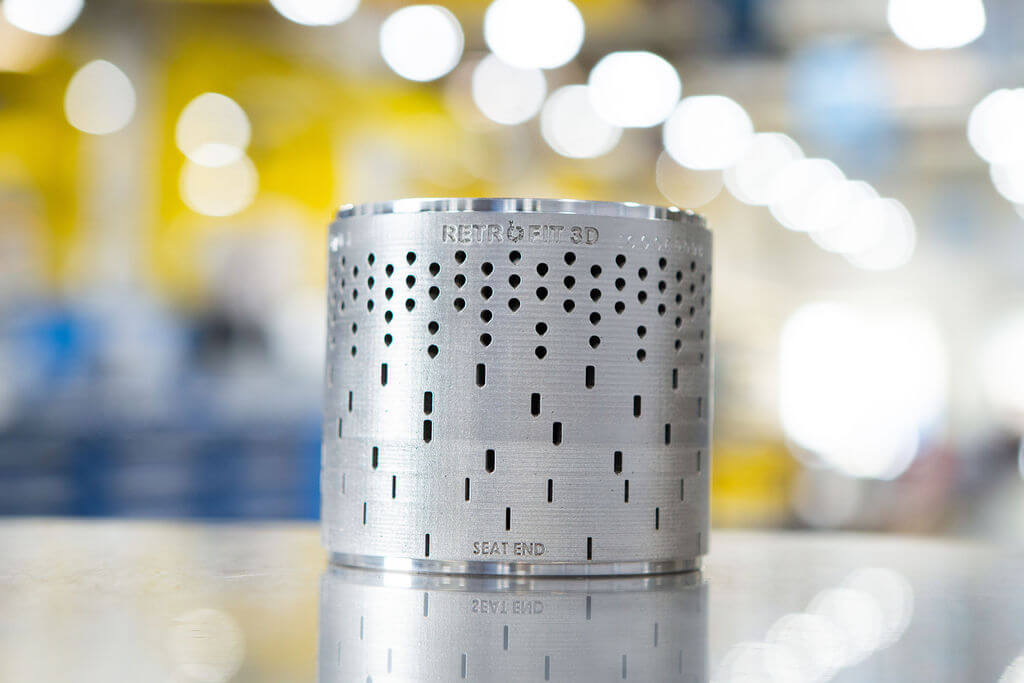Previously, we’ve discussed how maintenance, repair, and overhaul (MRO), as well as spare parts business cases are potentially great ways to disrupt existing businesses. But, we can go further than this. What if we think in a more modern way about spare parts? What if ,in lieu of just replacing something with an analogous component, we upgrade it? What if we replace a broken item with a better one or a give a new functionality to an old product through a spare part?
IMI Critical is a company that makes valves. Now, its IMI Critical Retrofit3D service can design and 3D print valves based on outmoded and out-of-production predecessors. The IMI Critical team will look at your valve, study the forces and environment in which it is being used, and design one to replace it. Rather than a one-on-one replacement, the valve will be upgraded and may, in fact, out-perform the previous one.

The ability to replace an out-of-production or old valve with a newer one is lovely, of course. But, to be able to upgrade it, make it sturdier, make the replacement last longer, or improve it some way is revolutionary, in my mind.
Many individuals think about MRO and spare parts in a very static way. And when we do one-on-one comparisons of a conventional component to an additively manufactured one, we look like clowns peddling laughs due to the high cost of parts. Of course, we can counter that in the future. When everything is additive, we will be better or cheaper or be able to save on the capital invested in tooling and spares. But this may only make sense if someone goes completely over to 3D printing. Few are likely to do this. Indeed, the success story in orthopedics started in the 90s and only now, thirty years later, large companies are investing heavily in additive.

But, if we can improve old parts then the business case can more readily be made. Many industrial parts would benefit greatly from mass reductions or performance improvements. In a previous series, I argue for Digital Kintsugi to improve and extend the functionality and life of objects. I also advocate for the Digital Readymade and reimagining existing objects. But, rather than that just being a case of radical dreaming, we can also see it as a way to reimagine your bottom line.
You can sell a person a thing, or sell them a thing and a service contract. Or you can sell them a thing, a service contract, and periodically redesign and upgrade your installed base. Let’s take air conditioners as an example. You can approach all of your existing customers and say “for the H150 Air Conditioners we have, we can now offer you an extra add-on HEPA filter”, thanks to some cutting of filtration media with scissors and a simple 3D print.
This part would be profitable for you very quickly and it wouldn’t be expensive even if no one ordered it. Meanwhile, you may have a new fan blade that would cost $10 and would make a fan five percent more energy efficient paying itself back in nine months. The 3D printed component would be low-volume and low cost to develop. You’d pitch It to your existing customers and get them to order it. And then you’d know that below a 1,000 parts you’d print it, above 1,500 you’d cast it, over 5000 you’d mold it. Your customers could, therefore, all potentially buy you any number of upgrades for their existing kit.
You could look at trends such as energy saving or light weighting or the addition of solar panels to buildings or working from home to design new add-ons or upgrades for everything. The automotive aftermarket produces any number of spare parts, add-ons and improvements for cars. As pointed out in my Brittle Spear Mine Your Den article, the automotive aftermarket alone is worth over $300 billion a year. Imagine what the aftermarket for everything else is worth?
Also, imagine what that opportunity would be in your line of business? And imagine what will happen if you don’t seize it? Then, your competitor will.
Subscribe to Our Email Newsletter
Stay up-to-date on all the latest news from the 3D printing industry and receive information and offers from third party vendors.
You May Also Like
Gorilla Sports GE’s First 3D Printed Titanium Cast
How do you help a gorilla with a broken arm? Sounds like the start of a bad joke a zookeeper might tell, but it’s an actual dilemma recently faced by...
Nylon 3D Printed Parts Made More Functional with Coatings & Colors
Parts 3D printed from polyamide (PA, Nylon) 12 using powder bed fusion (PBF) are a mainstay in the additive manufacturing (AM) industry. While post-finishing processes have improved the porosity of...
$25M to Back Sintavia’s Largest Expansion of Metal 3D Printing Capacity Since 2019
Sintavia, the digital manufacturing company specializing in mission-critical parts for strategic sectors, announced a $25 million investment to increase its production capacity, the largest expansion to its operations since 2019....
Velo3D Initiates Public Offering in a Bid to Strengthen Financial Foundations and Drive Future Growth
Velo3D (NYSE: VLD) has been among a number of publicly traded 3D printing firms that have attempted to weather the current macroeconomic climate. After posting a challenging financial report for 2023,...































